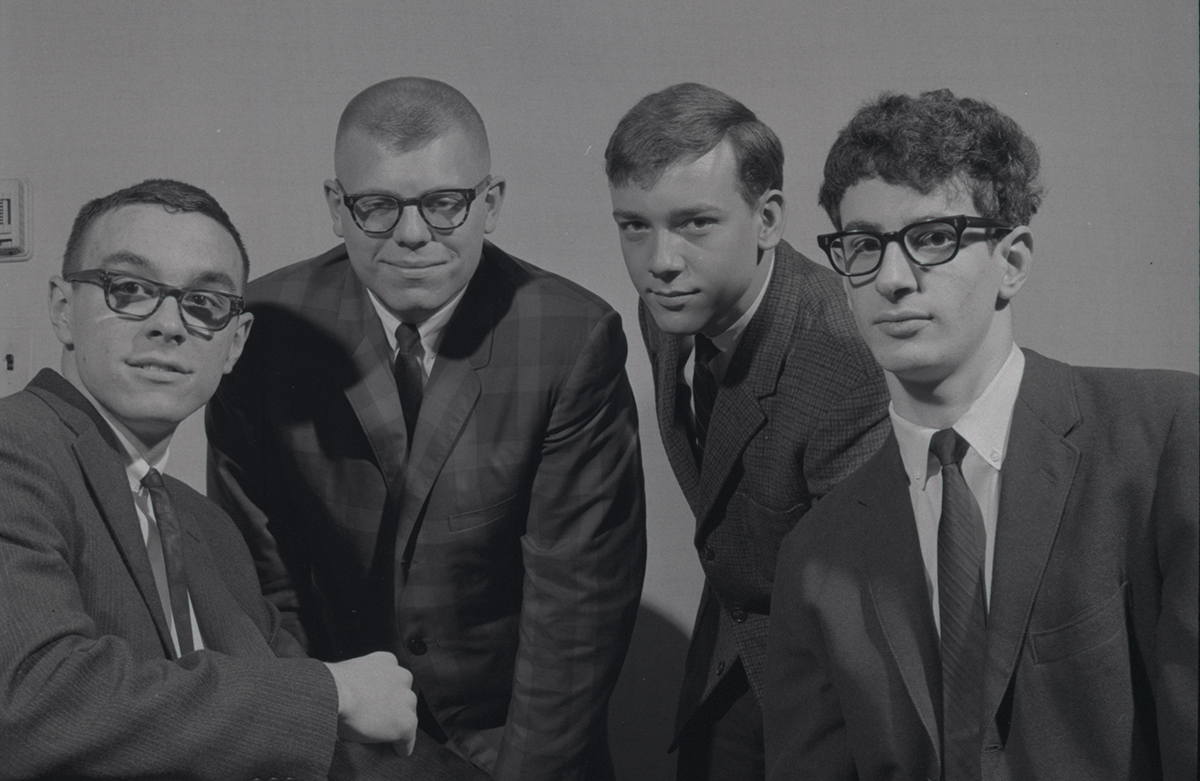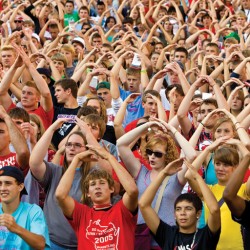The UW’s Game-Show Gods
The 1965 College Bowl team went undefeated at a time when campus needed a boost.

In 1965, this fearsome foursome made intellectual mincemeat of their game-show opponents. Left to right: Zillman, Hoffman, Hays, and Grover. UW Archives 2021S02119
Millions of TV viewers saw the UW’s undefeated 1965 season. The team needed no Hail Mary passes or buzzer-beating jumpers to go 5–0. Lightning reflexes and computer-quick recall did the trick for the fearsome foursome who made intellectual mincemeat of Utah State, Susquehanna University, Wilson College, Clarkson College of Technology, and Bethany College. The scholars matched wits on five straight Sundays in March and April on NBC’s quiz show College Bowl.
Team members Stuart Grover ’66, MA’67, PhD’71; Richard Hays ’66; Richard Hoffman ’65; and Donald Zillman ’66, JD’69 (plus alternate Peter Hoff ’66) survived playoffs against 60 other UW teams before being handpicked by their adviser, Jerry McNeely MS’50, PhD ’56, to advance. A UW professor and successful television writer, McNeely knew how to navigate the tricky world of TV game-showmanship.
“We were on a mission. We were going to win this thing, and everybody had a good time,” recalls Hoff, who became president of the University of Maine. “The questions weren’t pushovers. The ideal competitor would have been someone who had taken every course numbered 101.”
Under the hot TV lights, the brainy Badgers fielded questions such as: Name Grover Cleveland’s two successors as U.S. president. Who wrote La Traviata? What is Africa’s longest river? (Answers: Benjamin Harrison and William McKinley; Verdi; and the Nile.)
In one game, host Robert Earle started to ask for the name of a famous writer. “I thought, ‘I bet it’s Shelley. Let’s take a shot,’ ” recalls Zillman, who became president of the University of Maine at Presque Isle. “I buzzed in and got it right. Earle looked over, and I think he thought, ‘These guys are pretty good.’ ”
NBC treated the team like game-show gods. It flew them to New York every Saturday, hosted them at the swank Pierre hotel on Central Park, and feted them at the luxe 21 Club.
During a period when Badger sports slumped (the football team went 3–6 in 1964), the champs brought good cheer to campus, not to mention $10,500 in scholarship prize money and a $1,500 grant from a local department store.
After the final game, they found themselves “midlevel celebrities,” according to Zillman. Governor Warren Knowles LLB’33 shook their hands. The legislature honored them. They dined at the provost’s house.
But at some congratulatory ceremonies, the team grew uneasy. “At one public event, the speaker tried to make us represent his sentiment,” Zillman says. “He portrayed us as clean-cut opposites of hippie, antiwar protesters. Our politics ranged from moderately left to moderately right. Like our classmates, we were processing the volatile trends of the time. We were not for adoption by any single group.”
Published in the Spring 2022 issue


Comments
No comments posted yet.